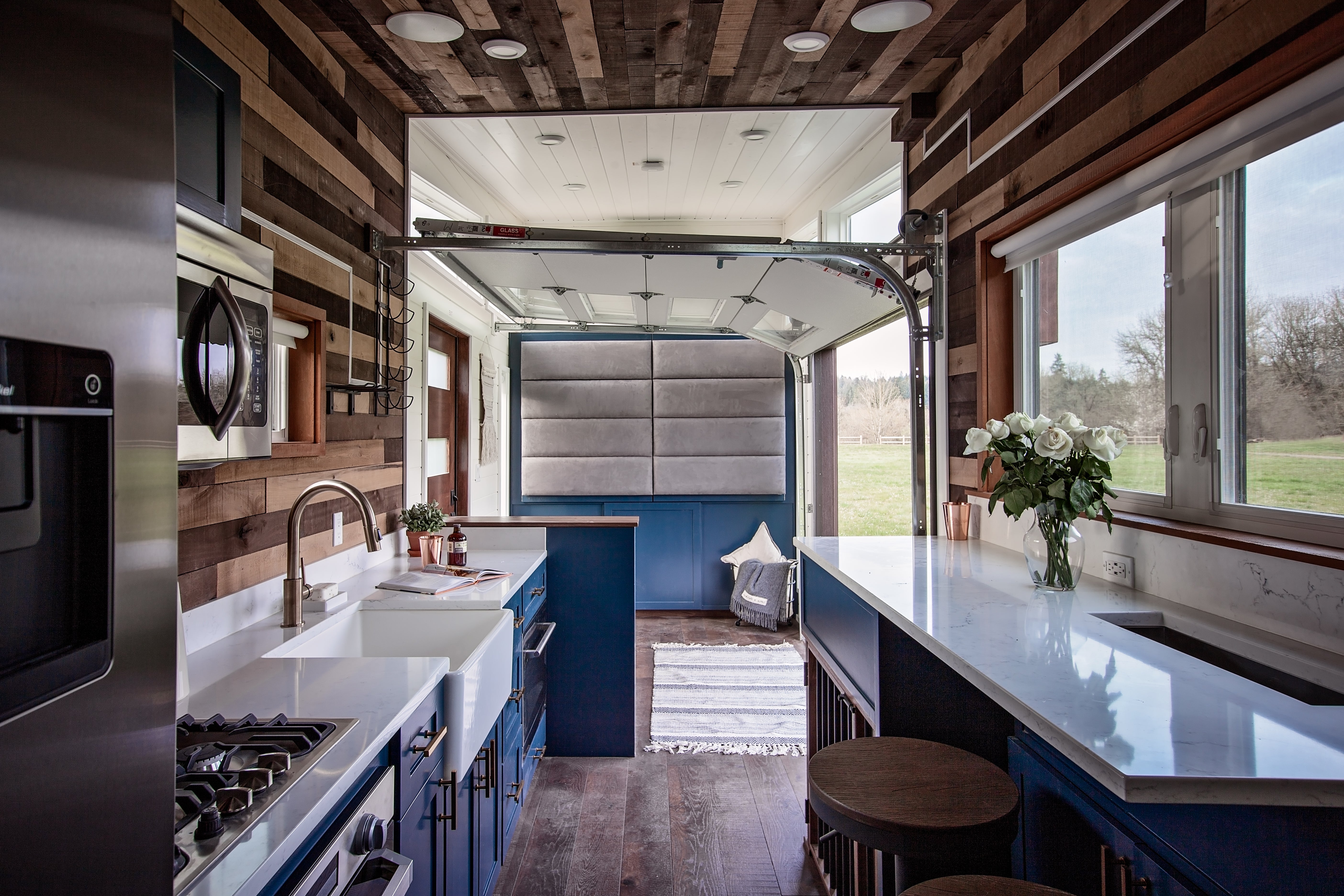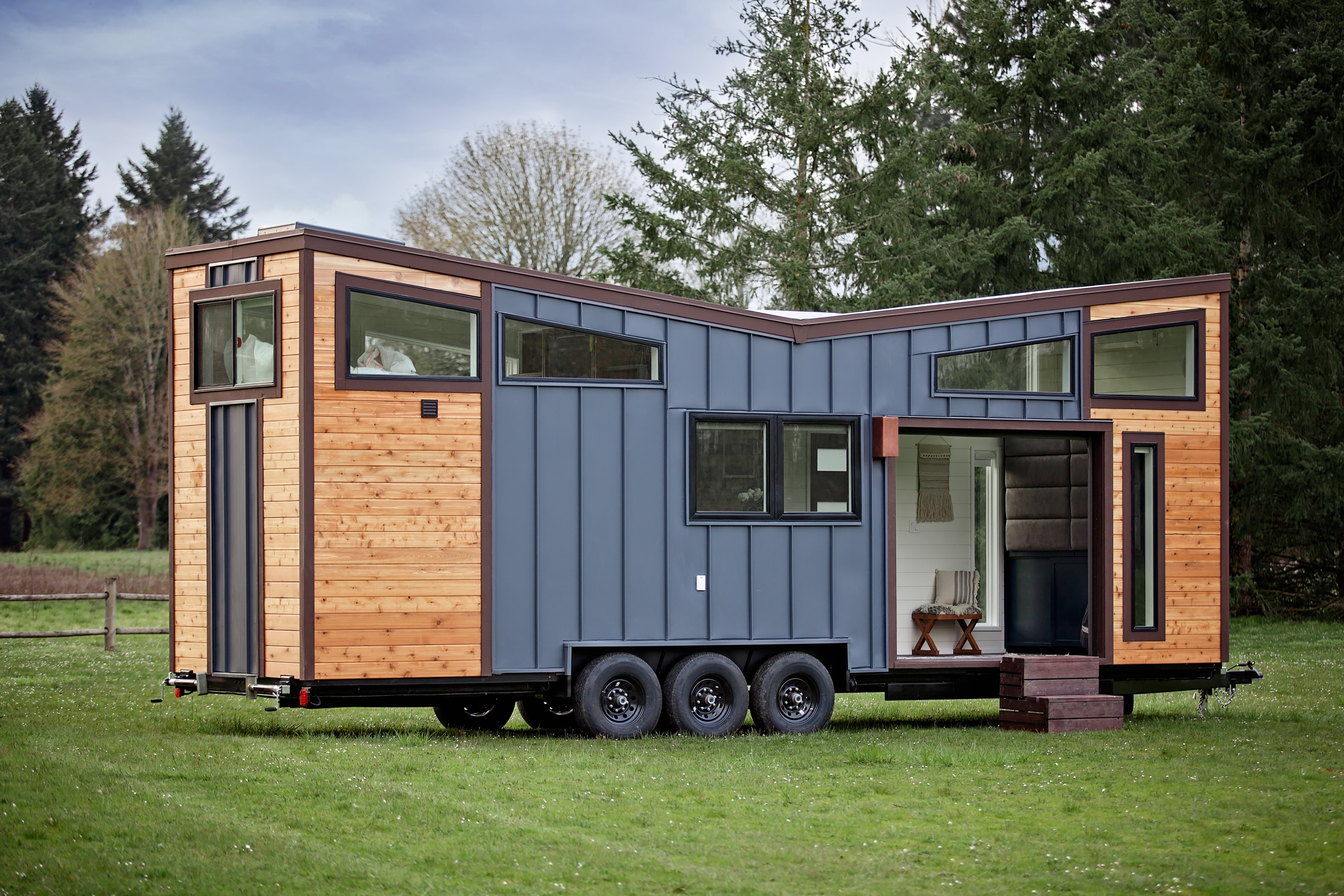In recent years, there has been a remarkable rise in the popularity of tiny homes. These small living spaces offer a variety of advantages, including cost effectiveness, environmental sustainability, and the opportunity for a simpler, more minimalist lifestyle. One key aspect of tiny home design that contributes to compact living is the incorporation of floor plans with a loft. In this article, we will explore the benefits of this design choice and how it maximizes space and comfort in a tiny home.
Incorporating floor plan software, tiny home designers can now transform even the most restricted spaces with precision. Advanced technology, like Virtual Floor Plan Cameras, enhances the efficiency and aesthetic appeal of these compact spaces by generating detailed floor plans swiftly.
The Rise of the Tiny Home Movement
The tiny home movement has gained traction as more people are seeking alternatives to traditional housing. With rising costs and a desire for more sustainable living, individuals are shifting towards small space living. Tiny homes provide an opportunity to downsize, reduce carbon footprints, simplify life and many other benefits.
Advantages of Tiny Home Living
Before delving into the specifics of tiny home floor plans with loft, let's highlight some of the advantages that come with tiny home living. Firstly, the smaller footprint of a tiny home means lower expenses, both in terms of construction and ongoing maintenance. Additionally, living in compact spaces encourages minimalistic living, which promotes a clutter free lifestyle and a focus on what truly matters.
1. Understanding Tiny Home Floor Plans
To truly make the most of limited space, an efficient interior design is paramount. Tiny homes are designed with careful consideration for functionality and optimization. Open concept floor plans are a common feature, where walls are minimized or even eliminated to create a sense of spaciousness. This open layout allows for multi purpose spaces, where areas can serve different functions based on individual needs. Gone are the days of cramped living and claustrophobic vibes, my friend. With a tiny home floor plan that includes a loft, you're not just getting a place to crash; you're stepping into a whole new world of trendy living. You won't believe the clever ways these tiny homes utilize every square inch, transforming it into a magical oasis of efficiency and style.
Picture this: an open concept layout that gives you the freedom to let your imagination run wild. No more feeling like you're trapped in a box - it's all about breaking down those walls, both literally and metaphorically. With minimized or even nonexistent walls, you're not only expanding the physical space but also creating an environment that screams "freedom."
%20(1).jpg)
And let's not forget about versatility. Multi-purpose spaces are the name of the game in these tiny homes. One moment, a room can be your cozy living area - the perfect spot to Netflix and chill. The next minute, with a quick rearrangement, it magically transforms into a dining room where you can enjoy a mouthwatering feast with your friends and family. The possibilities are endless.
So, don't settle for less when it comes to your living space. Think big and go tiny! With a tiny home floor plan that's designed with care and consideration, you'll have a place that not only maximizes every square inch but also brings a whole new level of coolness to your life. It's time to experience the freedom, versatility, and style that only tiny homes with loft floor plans can deliver.
2. Cozy Living: The Loft Space
Alright, let me break it down for you. Tiny home floor plans are pretty clever, especially when they include a loft. Simply put, a loft is a space directly above the first floor that gives you even more living space which in a tiny home is usually used as a spot to relax and catch some z's. By designing a loft into your it tiny home floor plan, When it comes to tiny home floor plans with loft, you gotta admit, it's a game-changer. With these clever designs, you're left with more of space for other essential living spaces - think whipping up gourmet meals in a larger kitchen, savoring every bite in a dedicated dining area, and having a living room area.
Advantages of Utilizing Loft Space
The loft area provides several advantages in tiny home design. Firstly, it maximizes the use of vertical space, allowing for an efficient use of limited square footage. This separation of living and sleeping areas creates a more organized and well defined space. By elevating the sleeping area, a sense of privacy and comfort is achieved, despite the compact size of the home.
Design Considerations for Loft Conversion
When planning a loft space in a tiny home, consideration must be given to access and safety. Sturdy yet smaller stairs or ladders are commonly used to access the loft area, ensuring ease and security. Additionally, it is important to consider headroom and ventilation to create a comfortable and functional sleeping space.
Keep in mind that you'll also need to make sure you have an egress window in your loft to be code compliant for emergencies.
.jpg)
3. Space Optimization: Storage Solutions
Efficient storage solutions are crucial in small home design. With limited square footage, it is essential to maximize every inch of space available. Loft storage solutions become a practical way to store belongings while keeping the main floor clutter free and open.
Maximizing Storage in Small Home Design
Innovative storage ideas are key to making the most of a tiny home's limited space. Utilizing vertical space is essential, and the loft area provides an opportunity for this. Incorporating built in shelving or cabinetry can help optimize storage and keep possessions neatly organized.
Creative Storage Ideas for Organized Living
In addition to utilizing loft storage, creative storage solutions can be implemented throughout the tiny home. From hidden compartments in stairs to multifunctional furniture with hidden storage compartments, there are endless ways to maximize space while maintaining a clean and organized living environment.

4. Sustainable Living: Tiny Homes and the Environment
Tiny homes are often at the forefront of sustainable housing. Their small size means less energy consumption and fewer resources utilized during construction. Additionally, many tiny homes are built using environmentally friendly materials, such as reclaimed wood or recycled materials.
Constructing a Tiny Home with Sustainable Materials
By choosing eco friendly materials for construction, tiny homeowners can reduce their environmental impact. Utilizing sustainable materials not only benefits the planet but also contributes to a healthier living environment.
Harnessing Renewable Energy for Off Grid Living
Many tiny homeowners also embrace off grid living by harnessing renewable energy sources such as solar panels and rainwater harvesting systems. This environmentally conscious approach allows for self sustainability and reduced reliance on traditional energy grids.
The Benefits of Joining a Tiny Home Community
Joining a tiny home community not only provides a sense of belonging and camaraderie but also offers opportunities to share resources and knowledge. By coming together, tiny homeowners can collectively take advantage of sustainable practices, furthering the impact of the tiny home movement on a larger scale.
5. Minimalistic Living: A Way of Life
Tiny homes inherently lend themselves to a minimalist lifestyle. The limited square footage forces individuals to prioritize what truly matters, resulting in a clutter free and simplified living environment.
The Essence of Minimalism in Tiny Home Living
Minimalism is not only about owning fewer possessions but also about cherishing what one does have. In a tiny home, minimalistic living becomes a necessity, allowing individuals to focus on experiences, relationships, and personal growth rather than material possessions.
Mindfulness and Simplicity in Small Home Design
Designing a small home requires careful consideration of what is truly essential. By intentionally curating a space that fosters simplicity and mindfulness, individuals can create a sanctuary that promotes well being and a deep appreciation for the smaller things in life.
Conclusion
Tiny home floor plans that incorporate a loft offer a unique solution for maximizing space and comfort in a small living environment. From efficient space optimization to creative storage solutions, these floor plans provide a practical yet stylish living solution. By embracing minimalistic living and incorporating sustainable practices, individuals can create a cozy, eco friendly home that allows them to live life on their own terms.
10 Top Key Takeaways
- Tiny homes offer a cost effective and sustainable housing alternative.
- Floor plans with a loft maximize space and comfort in a small living environment.
- Open concept floor plans and multi purpose spaces optimize functionality.
- Utilizing loft space provides a cozy sleeping area and frees up the main floor.
- Loft design considerations include access, safety, and privacy.
- Loft storage solutions optimize storage in a compact home.
- Creative storage ideas throughout the home contribute to an organized living environment.
- Tiny homes are environmentally friendly and utilize sustainable materials.
- Off grid living is achievable through renewable energy sources.
- Joining a tiny home community offers shared resources and a sense of community.
Take the first step towards embracing a smaller lifestyle and explore the tiny home plans to find your perfect design.
Need a very specific tiny home plan? Discover how you can join the tiny home revolution and create your own 100% custom tiny home floor plan.






Share: